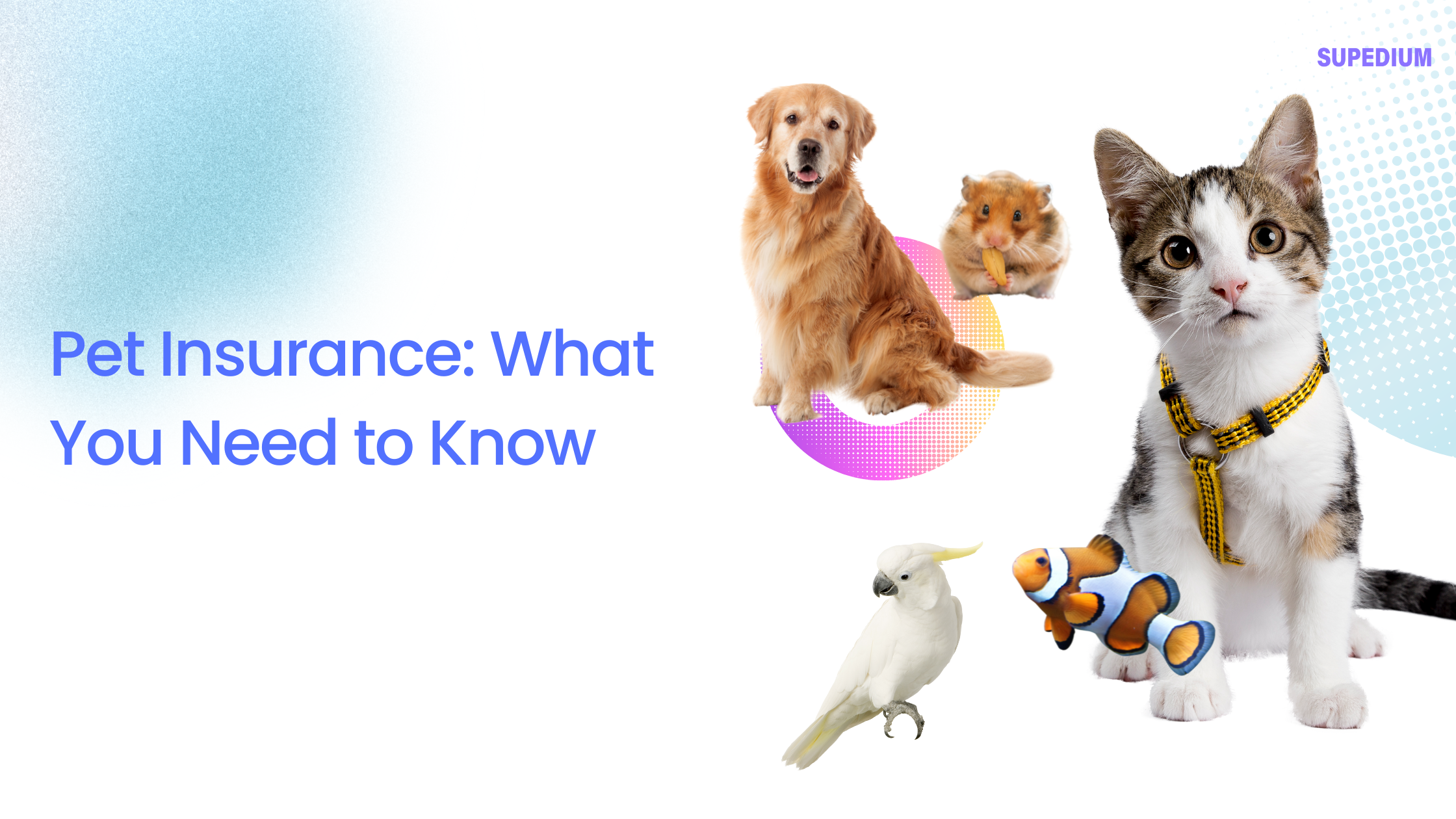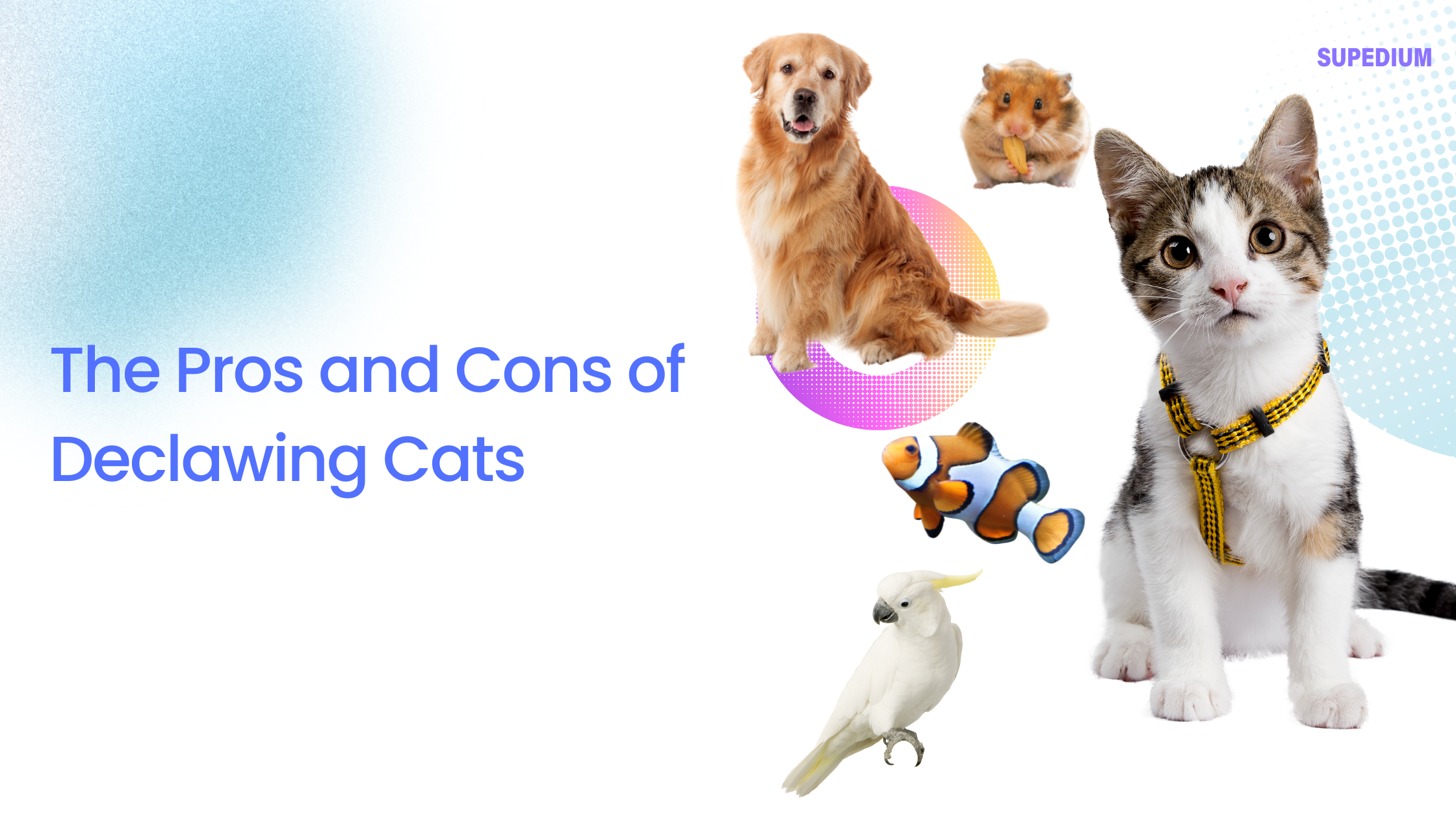Table of Contents
![]()
As pet ownership becomes increasingly common and veterinary costs continue to rise, pet insurance has emerged as a crucial tool for responsible pet owners. This comprehensive guide covers everything you need to know about pet insurance, from understanding its types and how it works to choosing the right plan and navigating claims.
What is Pet Insurance?
Pet insurance is a financial product designed to help cover the cost of veterinary care for your pet. It operates similarly to health insurance for humans, providing coverage for various types of medical expenses depending on the policy. Pet insurance has evolved significantly over the years, initially starting as a niche offering but now becoming more mainstream as pet care becomes more advanced and expensive.
Types of Pet Insurance
1. Accident-Only Coverage Accident-only coverage provides financial protection for injuries sustained by your pet due to accidents. This type of insurance is typically less expensive than more comprehensive plans. It covers emergency care, surgeries, and treatments related to accidental injuries, but does not cover illnesses.
Pros:
- Lower premiums
- Simple coverage
Cons:
- Limited to accidents
- Does not cover illnesses or preventive care
2. Illness-Only Coverage Illness-only coverage focuses on medical expenses related to illnesses rather than accidents. This includes diseases, infections, and other health issues that are not related to accidental injuries.
Pros:
- Lower cost compared to comprehensive plans
- Covers a range of illnesses
Cons:
- Does not cover accidental injuries
- May still require additional coverage for preventive care
3. Comprehensive Coverage Comprehensive pet insurance combines coverage for both accidents and illnesses. It offers a broad range of protection, including treatments for chronic conditions, hereditary issues, and more.
Pros:
- Extensive coverage
- Peace of mind for a wide range of scenarios
Cons:
- Higher premiums
- Complex policy terms
4. Wellness Plans Wellness plans are designed to cover routine and preventive care, such as vaccinations, annual check-ups, and dental cleanings. These plans often come as add-ons to traditional insurance policies.
Pros:
- Encourages regular preventive care
- Helps manage routine costs
Cons:
- Does not cover emergency or illness-related expenses
- Can be an additional cost on top of other insurance
5. Comparison of Coverage Types When comparing coverage types, consider the scope of protection, the associated costs, and the specific needs of your pet. Comprehensive plans offer the broadest protection, but accident-only or illness-only plans may be suitable for those on a budget or with pets at lower risk of certain conditions.
How Pet Insurance Works
1. Premiums Premiums are the amount you pay for your pet insurance policy, usually on a monthly or annual basis. The cost of premiums can vary based on factors such as your pet’s age, breed, and location. For example, older pets or breeds prone to specific health issues may have higher premiums.
2. Deductibles Deductibles are the amount you must pay out-of-pocket before your insurance coverage kicks in. Deductibles can be annual (you pay once per year) or per-incident (you pay for each separate incident). Higher deductibles generally result in lower premiums but require more out-of-pocket expenses.
3. Reimbursement Rates Reimbursement rates refer to the percentage of the vet bill that your insurance will cover after you have met your deductible. For example, if you have an 80% reimbursement rate, the insurance will cover 80% of the eligible expenses after deductibles are met. Choosing the right reimbursement rate can impact your overall costs and coverage.
4. Coverage Limits Coverage limits include annual limits (the maximum amount the insurance will pay per year) and lifetime limits (the maximum amount the insurance will pay over the pet’s lifetime). It’s important to understand these limits as they affect how much you can claim for your pet’s care.
Choosing the Right Pet Insurance
1. Assessing Your Pet’s Needs Evaluate your pet’s age, breed, health history, and lifestyle when selecting insurance. For example, pets with pre-existing conditions or breeds prone to specific illnesses may require more comprehensive coverage.
2. Researching Providers Compare different pet insurance providers to find reputable companies that offer the best coverage for your needs. Look for customer reviews, ratings, and any industry certifications to ensure reliability.
3. Understanding Policy Terms Carefully read the policy terms and conditions, paying close attention to exclusions, waiting periods, and coverage limitations. Understanding these details will help you avoid surprises when filing a claim.
4. Cost vs. Coverage Balance Determine the right balance between cost and coverage based on your budget and your pet’s needs. While comprehensive coverage offers the most protection, accident-only or illness-only plans might be more cost-effective depending on your circumstances.
Filing a Claim
1. Claim Process Overview Filing a claim typically involves submitting a claim form along with your pet’s medical records and invoices. Each insurance provider has its own process, so follow their specific guidelines for a smooth experience.
2. Common Issues and How to Address Them Common issues include denied claims or discrepancies between the billed amount and the reimbursement. If a claim is denied, you can often appeal the decision by providing additional documentation or clarification.
Benefits of Pet Insurance
1. Financial Protection Pet insurance helps manage the financial impact of unexpected medical expenses, covering a portion of the costs and reducing the burden on your budget.
2. Access to Quality Care Insurance allows you to consider advanced treatments and specialist care without worrying as much about the financial implications, ensuring your pet receives the best possible care.
3. Peace of Mind Knowing that you have coverage for unexpected veterinary bills provides peace of mind and reduces stress during emergencies.
Drawbacks and Considerations
1. Cost Concerns Pet insurance represents an ongoing expense, and premiums can increase over time. Evaluate whether the long-term costs align with the potential benefits.
2. Coverage Limitations Be aware of exclusions for pre-existing conditions and limitations on certain treatments or breeds. These factors can affect the overall value of the insurance.
3. Policy Complexity Understanding and comparing different policies can be complex. Ensure you fully comprehend the terms before committing to a plan.
Alternatives to Pet Insurance
1. Savings Accounts for Pets Setting up a dedicated savings account for pet care can be an alternative to insurance. Regularly contribute to this fund to cover routine and emergency expenses.
2. Payment Plans and Veterinary Credit Some veterinary practices offer payment plans or credit options to help manage the cost of care. These can be useful if you need to cover large bills without insurance.
Case Studies and Real-Life Examples
1. Success Stories Many pet owners have benefited from insurance when their pets faced emergencies or required costly treatments. These stories highlight the practical advantages of having coverage.
2. Challenges and Mistakes Some pet owners encounter challenges with their policies, such as denied claims or misunderstandings about coverage. Learning from these experiences can help you avoid similar issues.
Conclusion
Pet insurance can be a valuable investment for managing veterinary costs and ensuring comprehensive care for your pet. By understanding the different types of coverage, how insurance works, and how to choose the right plan, you can make an informed decision that best suits your pet’s needs and your financial situation. Careful research and consideration will help you find the right balance between cost and coverage, providing peace of mind for both you and your furry friend.
Share This



